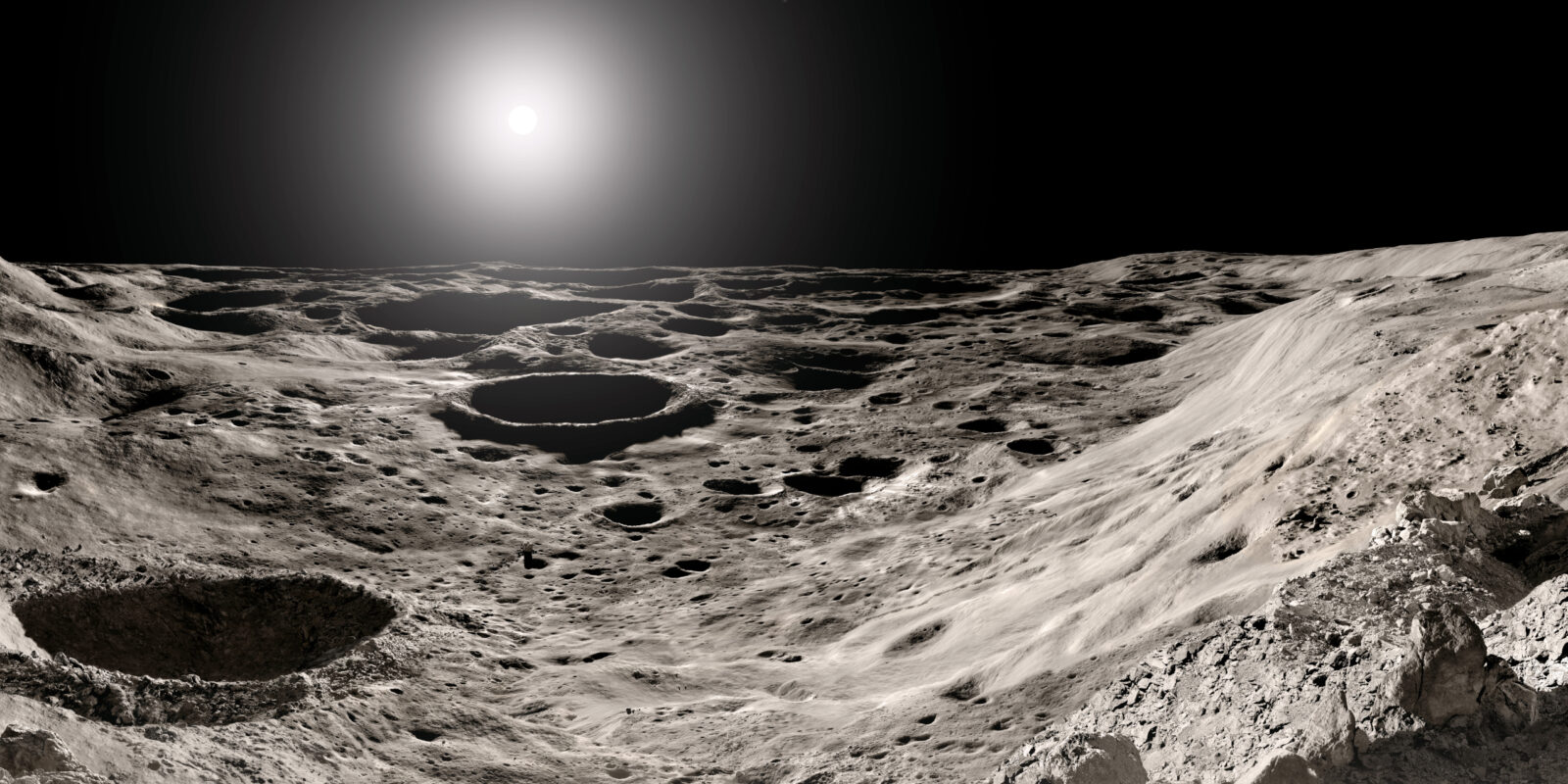Mercury

World of Extremes
Mercury is the closest planet to the Sun. This rocky world gets hotter than an oven and colder than a freezer. Its desolate surface is heavily cratered and split by cracks.
| Distance From Sun | 29.6 million mi (0.4x Earth’s distance from Sun) |
| Structure | iron core, crust and mantle rock |
| Temperature (Planetary Extremes) | Day 801°F (427°C); Night -279°F (-173°C) |
| Mass | 18 Mercurys = 1 Earth |
| Volume | 19 Mercurys could fit inside Earth |
| Day | 177 days |
| Year | 88 days |
| Axial Tilt | 0° |




Planetary Desolation
Mercury’s rugged surface is an airless desert. It shimmers under the relentless glare of the nearby Sun.
An Extreme Planet

Mercury is all rock and no atmosphere. Much of the surface either broils or freezes during the planet’s long days and nights. Temperatures rise to more than 800°F before sunset and drop to nearly – 300°F just before sunrise. Earth’s warmest and coldest places are balmy compared with Mercury’s day-night temperature extremes.
Twin Worlds?

Mercury looks like a twin of our Moon. Both worlds have many impact craters, but on Mercury, long, jagged cliffs split the crust. Some of these scarps are evidence that the surface shrank and cracked as the planet’s iron core cooled.
Building the Solar System

During the formation of the solar system, our young star’s heat destroyed nearby ices and gases. Close to the Sun, the rocky materials survived and formed Mercury, Venus, Earth, Mars, and the asteroids. In the outer solar system, temperatures were cold enough to allow ice and gas to exist as well. These were the building blocks of the gas giants, their frozen moons and rings, and countless comets.